
How to Use RGB: Examples, Pinouts, and Specs
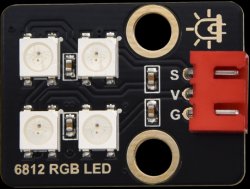
 Design with RGB in Cirkit Designer
Design with RGB in Cirkit DesignerIntroduction
An RGB LED is a versatile electronic component that combines red, green, and blue light-emitting diodes in a single package. By adjusting the intensity of each color, it can produce a wide spectrum of colors, making it ideal for a variety of applications such as mood lighting, display panels, and decorative purposes. RGB LEDs are commonly used in electronics projects, including those involving microcontrollers like the Arduino UNO.
Explore Projects Built with RGB
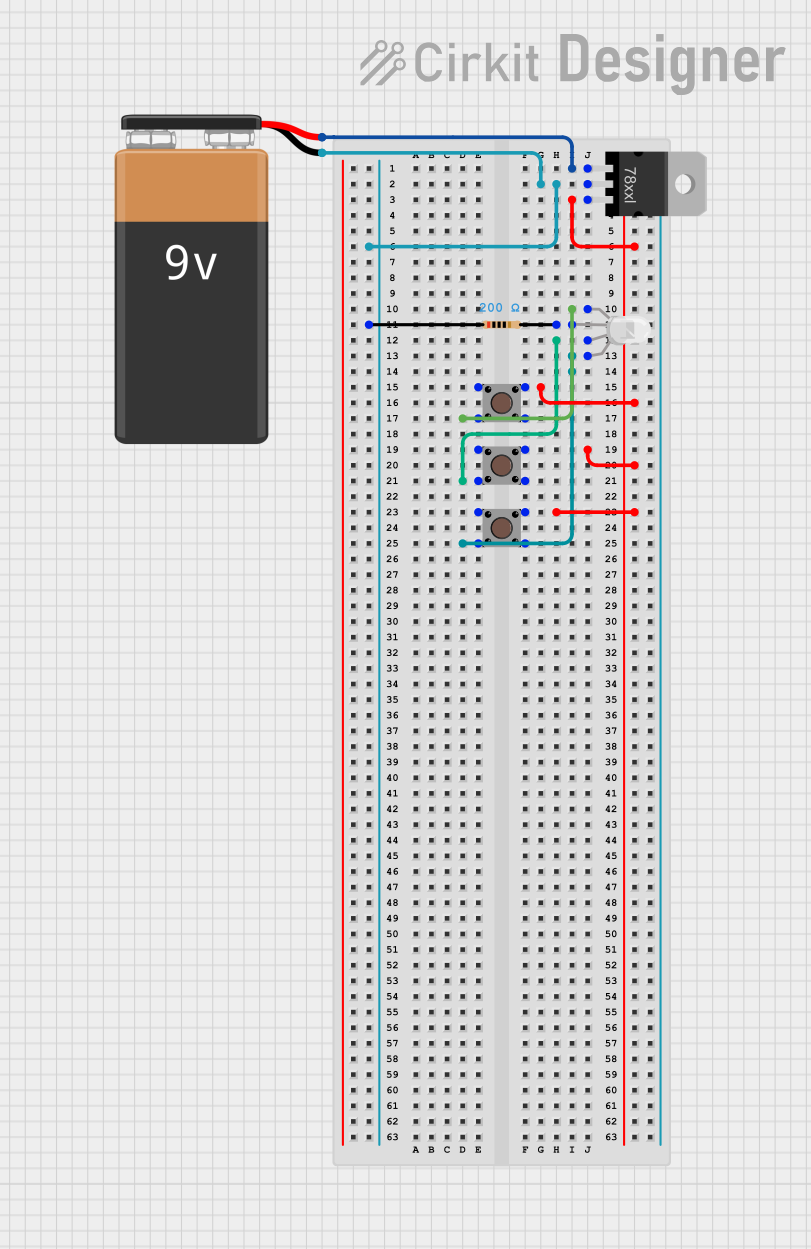
 Open Project in Cirkit Designer
Open Project in Cirkit Designer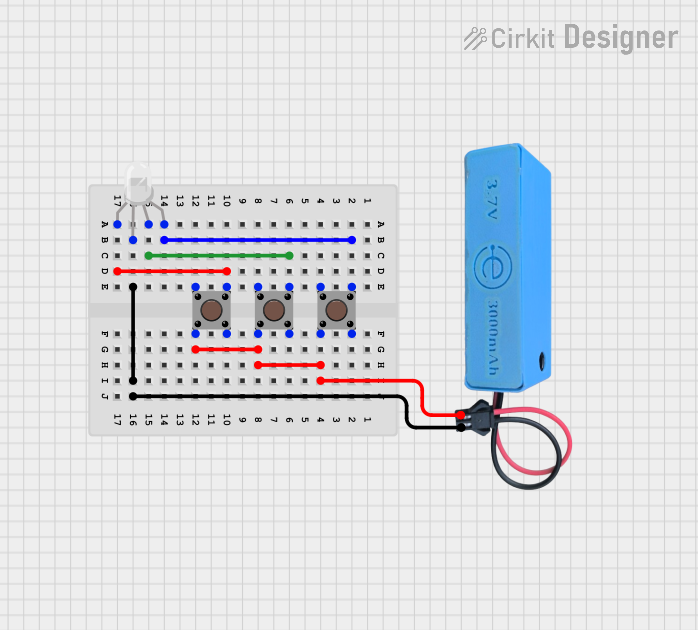
 Open Project in Cirkit Designer
Open Project in Cirkit Designer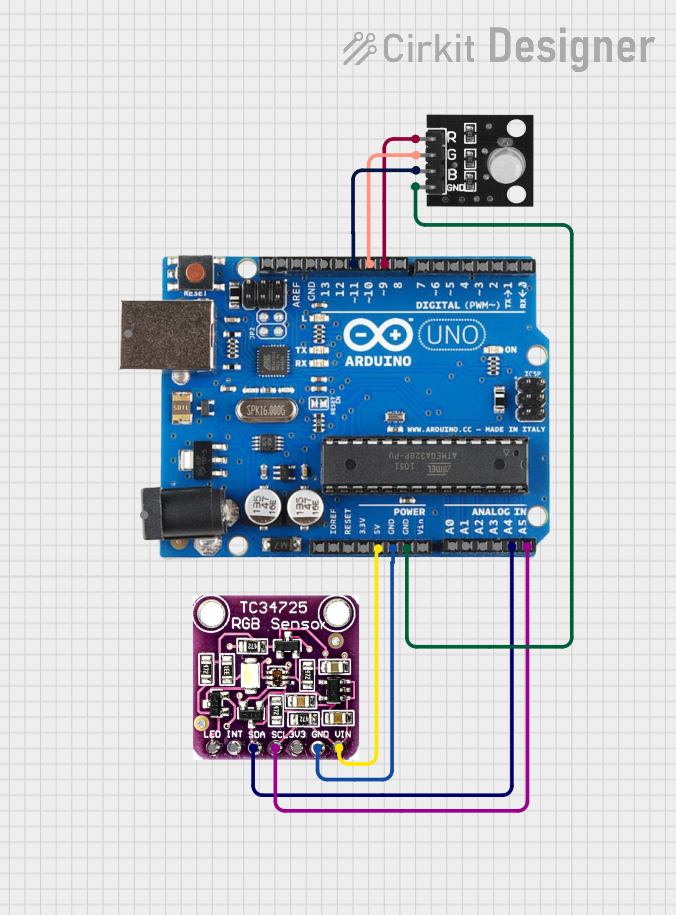
 Open Project in Cirkit Designer
Open Project in Cirkit Designer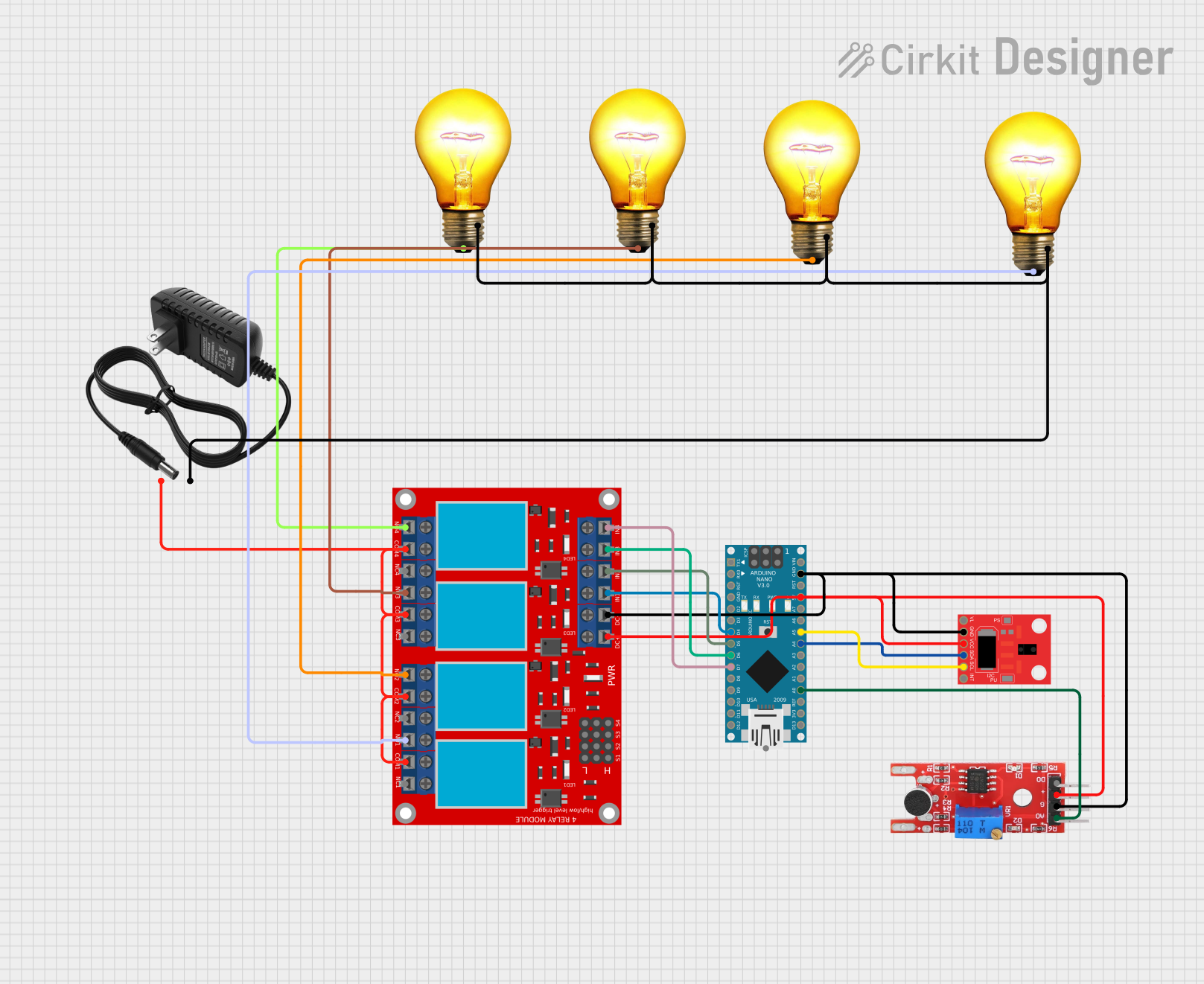
 Open Project in Cirkit Designer
Open Project in Cirkit DesignerExplore Projects Built with RGB

 Open Project in Cirkit Designer
Open Project in Cirkit Designer
 Open Project in Cirkit Designer
Open Project in Cirkit Designer
 Open Project in Cirkit Designer
Open Project in Cirkit Designer
 Open Project in Cirkit Designer
Open Project in Cirkit DesignerTechnical Specifications
Key Technical Details
- Forward Voltage: Typically 2.0V - 2.2V for red, 3.0V - 3.2V for green and blue
- Forward Current: 20mA (per channel)
- Luminous Intensity: Varies by color and manufacturer
- Viewing Angle: Typically 120 degrees
Pin Configuration and Descriptions
| Pin Number | Color | Description |
|---|---|---|
| 1 | Red | Anode or cathode for the red LED segment |
| 2 | Common | Common anode or cathode for all segments |
| 3 | Green | Anode or cathode for the green LED segment |
| 4 | Blue | Anode or cathode for the blue LED segment |
Note: The common pin may be either an anode or cathode, depending on the type of RGB LED (common anode or common cathode).
Usage Instructions
Connecting an RGB LED to a Circuit
- Identify the Type: Determine if your RGB LED is common anode or common cathode.
- Resistor Selection: Choose appropriate resistors to limit current to each LED segment. Use Ohm's law (V = IR) to calculate the resistor value.
- Wiring: Connect the common pin to either VCC (for common anode) or GND (for common cathode). Connect each color pin through a resistor to a digital output pin on your microcontroller.
- Microcontroller Configuration: Configure the microcontroller pins as outputs.
Important Considerations and Best Practices
- Current Limiting: Always use current-limiting resistors to prevent damage to the LED.
- PWM Control: Use pulse-width modulation (PWM) to control the brightness of each color.
- Heat Dissipation: Ensure proper heat dissipation if operating at high brightness levels for extended periods.
Example Code for Arduino UNO
// Define the RGB LED pins
const int RED_PIN = 9; // Red LED pin
const int GREEN_PIN = 10; // Green LED pin
const int BLUE_PIN = 11; // Blue LED pin
void setup() {
// Set the LED pins as outputs
pinMode(RED_PIN, OUTPUT);
pinMode(GREEN_PIN, OUTPUT);
pinMode(BLUE_PIN, OUTPUT);
}
void loop() {
// Set the color to purple (red + blue)
analogWrite(RED_PIN, 255); // Red at full intensity
analogWrite(GREEN_PIN, 0); // Green off
analogWrite(BLUE_PIN, 255); // Blue at full intensity
delay(1000); // Wait for 1 second
// Set the color to aqua (green + blue)
analogWrite(RED_PIN, 0); // Red off
analogWrite(GREEN_PIN, 255); // Green at full intensity
analogWrite(BLUE_PIN, 255); // Blue at full intensity
delay(1000); // Wait for 1 second
}
Note: The above code assumes a common anode RGB LED. For a common cathode, invert the PWM values (use 255 - value).
Troubleshooting and FAQs
Common Issues
- Dim or No Light: Ensure the resistors are correctly calculated and installed. Check for proper power supply voltage and ground connections.
- Incorrect Colors: Verify that the pins are connected to the correct color anodes or cathodes. Adjust PWM values as needed.
- Flickering: Ensure stable power supply and check for loose connections.
Solutions and Tips
- Resistor Calculation: Use online LED resistor calculators for accurate resistor values.
- PWM Frequency: If using PWM, ensure the frequency is high enough to avoid visible flicker.
- Code Debugging: Use serial output to debug and verify that the correct PWM signals are being sent.
FAQs
Q: Can I connect an RGB LED directly to an Arduino without resistors? A: No, resistors are necessary to limit the current and prevent damage to both the LED and the Arduino.
Q: How do I create custom colors?
A: Mix different intensities of red, green, and blue using the analogWrite() function to create custom colors.
Q: What is the difference between common anode and common cathode RGB LEDs? A: In common anode LEDs, all anodes are connected together to VCC. In common cathode LEDs, all cathodes are connected to GND. The type affects how you control the LED with your microcontroller.